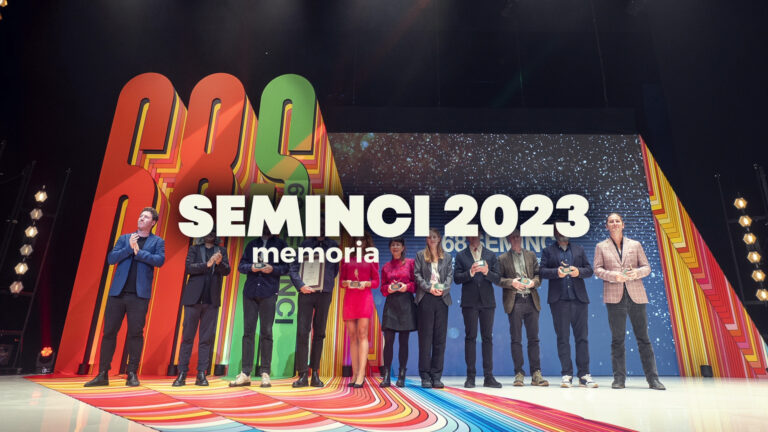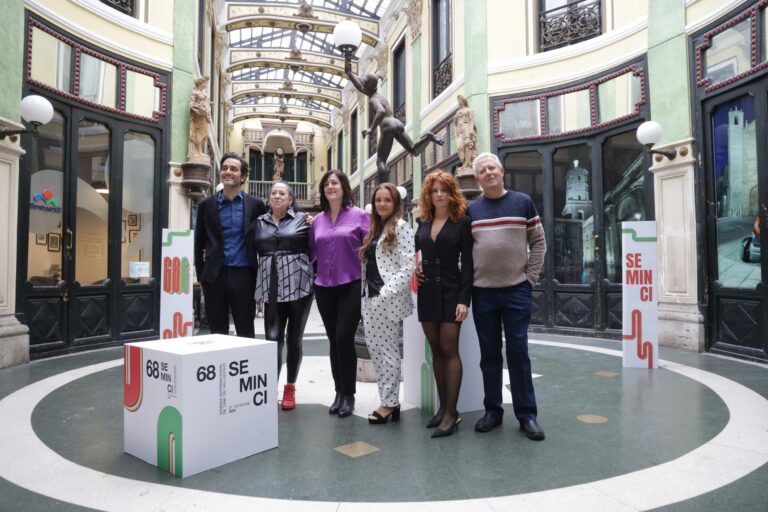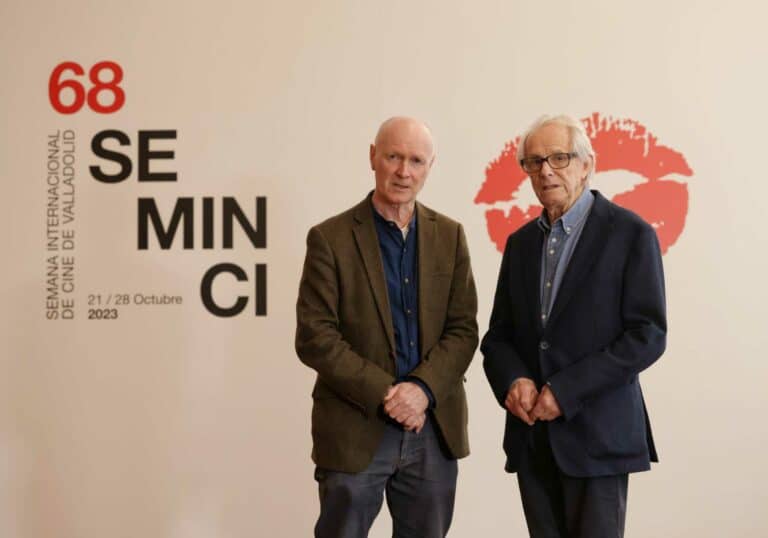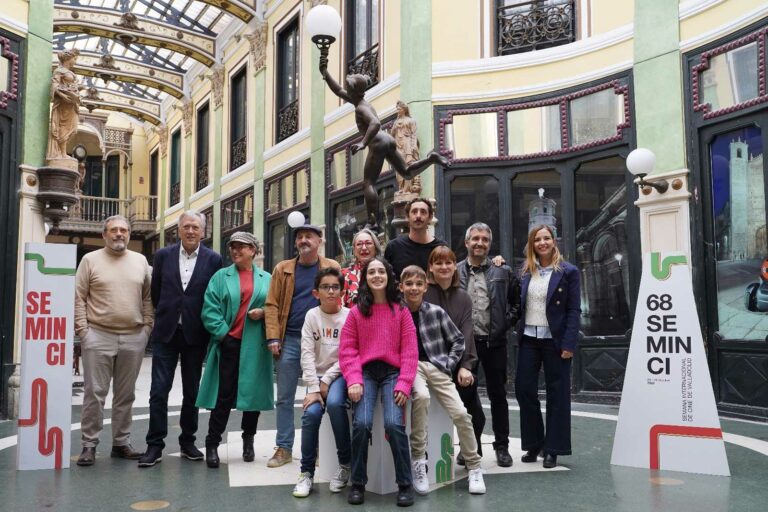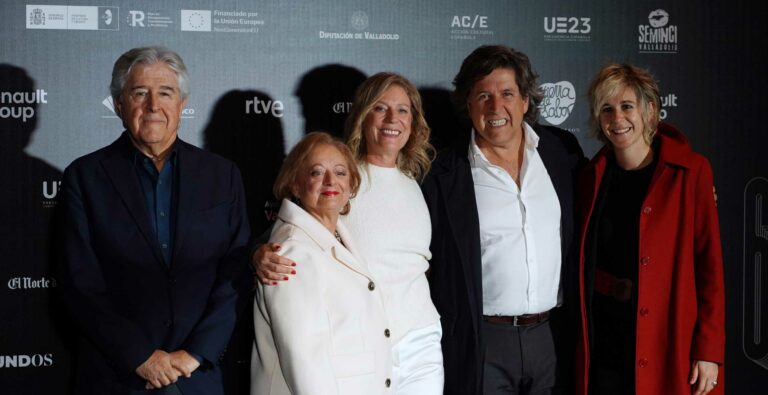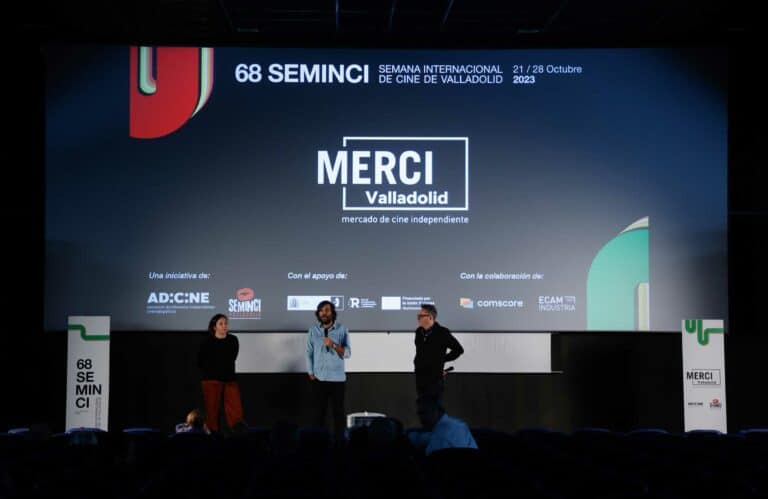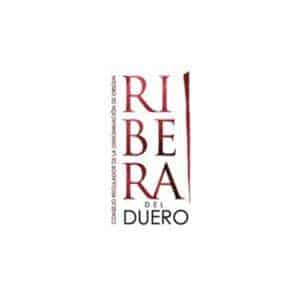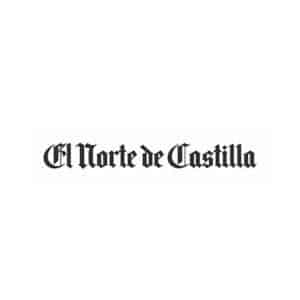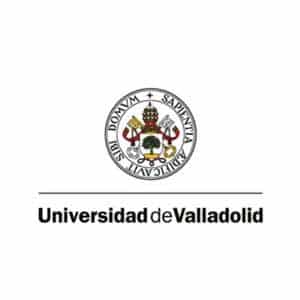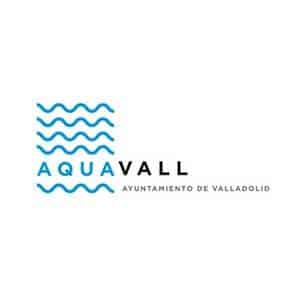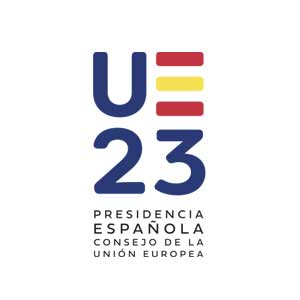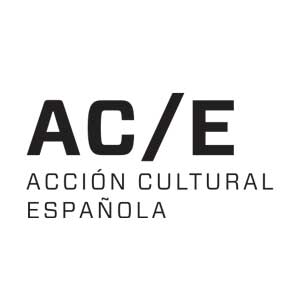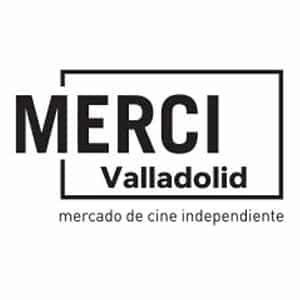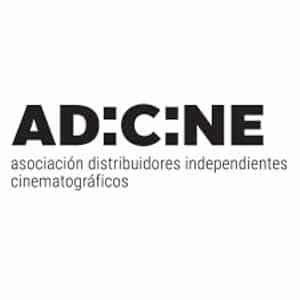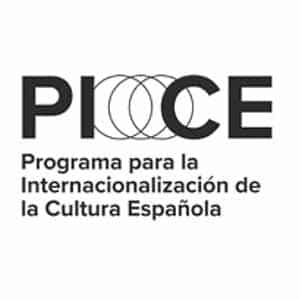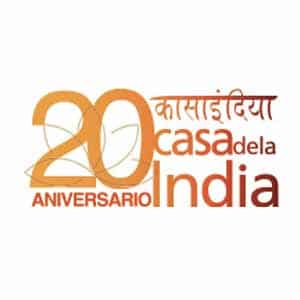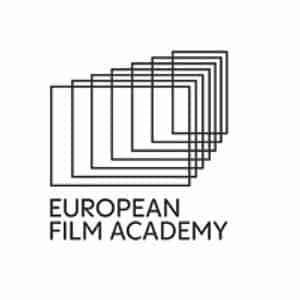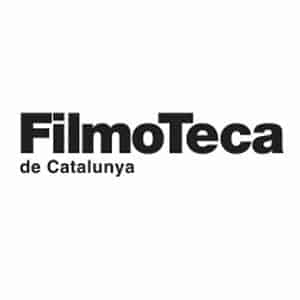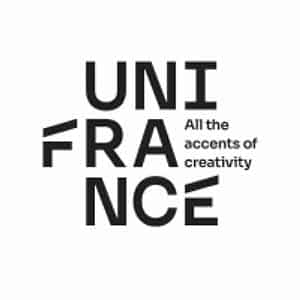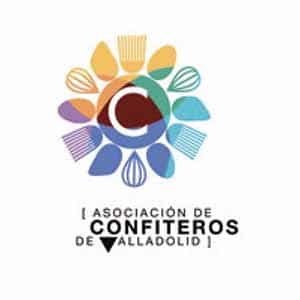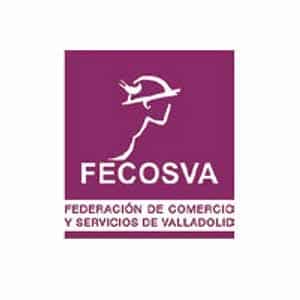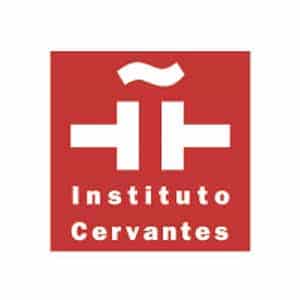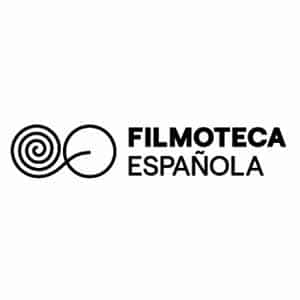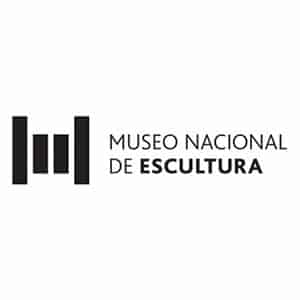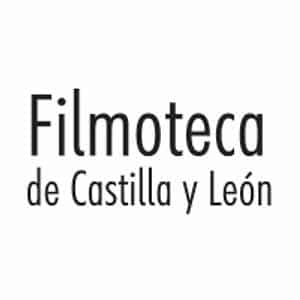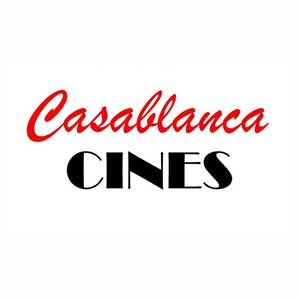Charlotte Vandermeersch, co-director of Le Otto Montagne, has appeared at a press conference to talk about the film with which she and her husband, the Belgian director Felix Van Groeningen, are competing in the Official Section of the 67th Seminci, and which is also competing for the Green Spike
The dazzling film Le otto montagne, which has already won the Jury Prize at the Cannes Film Festival this year (tying with Jerzy Skolimowski‘s EO), is the first feature film that Belgian filmmakers Felix Van Groeningen and Charlotte Vandermeersch have made together. The film is adapted from a novel of the same name by Paolo Cognetti, which was a great publishing success in Italy, and Charlotte Vandermeersch has explained how the story of the friendship between two boys, Bruno and Pietro, told in the book was turned into a feature film.
“The adaptation of Cognetti’s book was a proposal made to Felix, my husband, because of his previous work, and we liked it very much because it is the story of a friendship over 30 years, a very ethical, serene, very honest story, in which there is pain, there is happiness… And it’s a bit like life, which are the stories we like. The Italian producers didn’t want an Italian director, they were looking for a more international director. In fact they thought about making the film in English. But Felix said no, it was a very authentic story and we had to keep it as such in Italian, in the most authentic way possible”.
Charlotte Vandermeersch also explained why they chose a square format, 4/3, to reflect the incredible landscapes of the Italian Alps and Nepal in which they filmed. “When we started the process we thought we would shoot in a longer format, but when we started working we realised, looking at the photographs, that a square look suited it because it gave it more height and enhanced the mountain scenery a lot, and we wanted to place our characters in relation to the mountain. We also wanted to make a mix between the past and today. We worked with high quality lenses and high definition, but in an old format, which lets you see what’s on the right and what’s on the left, and absorbs the people in what’s happening in the centre”.
A film like life
When asked by a journalist how they planned to make the time jumps as the two children become adults, Vandermeersch said that they always wanted to tell the story chronologically.
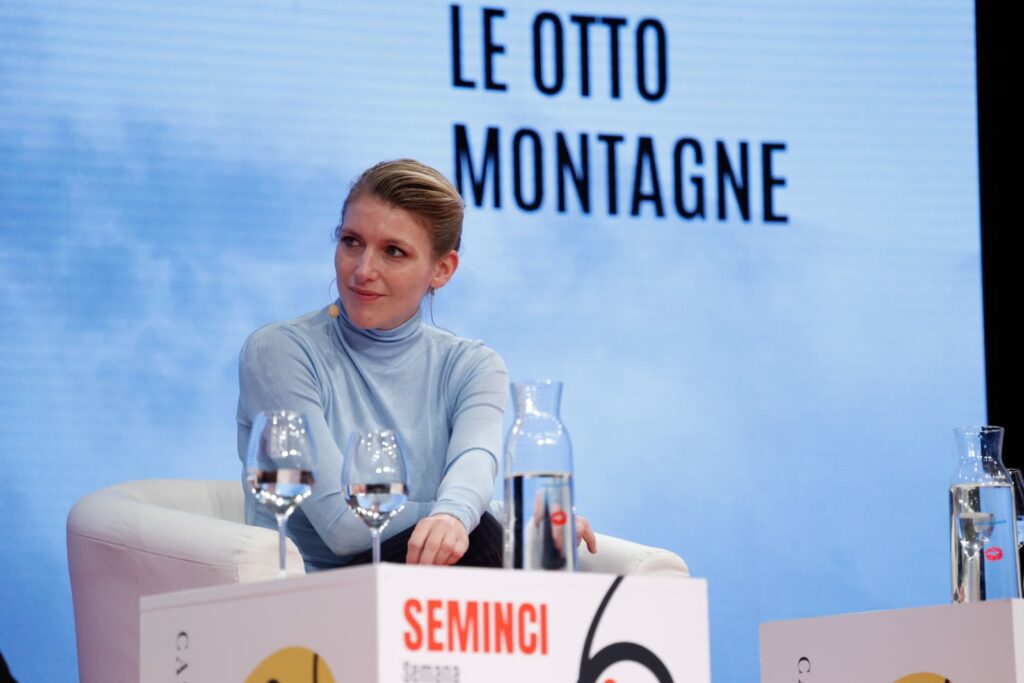
“When you write a book you have more freedom to make time jumps… But in life you can’t go back, you can’t go back to the past and go forward. If you had an argument ten years ago with your father and you haven’t spoken to him since, if you lose a friend, if your father dies and you haven’t managed to reconcile with him… If your friend is living abroad and you don’t see him for two years, but then you see him as if it were yesterday… What we were looking for is to show how life always presses forward and you can’t go back, just like the seasons of the year. What we were looking for is for the film to be like life”.
Two Italian actor friends
Another of the journalists’ questions was about the choice of Italian actors Luca Marinelli and Alessandro Borghi, who in this film are back together again, but in a very different register to their usual one.
“They are both big stars in Italy right now, they are important actors. When we were talking to our agent, he proposed them both to us. We went to Reno to meet them, and at first they wanted to take the roles but in reverse, Alessandro wanted to play Pietro because he felt more identified with him, and Luca wanted to play Bruno, but we saw that he was too open-minded, we didn’t see him in that role”, recalled the filmmaker.
“For a while, we just took Luca and we were testing with different actors and roles, first Luca being Bruno with someone else, then Luca being Pietro with another actor… We were looking for a new talent, someone different. And five months later, Luca and Alessandro, who are friends, were talking and Alessandro told us that he would like to try out the role of Bruno, and that he saw Luca as Pietro, as a person who had seen more of the world and with a different way of looking at life. And Alessandro proposed to audition like that, with the roles reversed. All of that was necessary for all of us, to have some time to realise that the ideal thing was to play the roles like that. It’s something that surprised us a lot and caught our attention”.
An efficient team
Although the director of the film was to be Felix Van Groeningen, Charlotte – who is above all an actress, although she had already collaborated with her husband on the script of Alabama Monroe (2012) – has told how it was he who proposed to her, by surprise, to share the task.
“At first we didn’t consider directing it together. We had thought about writing the script together, and we started between February and March 2020, with the confinement, when the covid invaded everything… It became a very intense process, as we were both at home together, writing… We finished the first draft between June and July, and we were very happy, we liked it, and the Italian producers liked it too. One day we were in the kitchen and Felix proposed to me that we direct the film together. I didn’t expect it, but I thought it was a very good idea. I was orienting my work more and more towards film, I thought I was ready, and we got on with it. We are very different people, for example I am much better at languages. And this was a very big project. We moved to Italy with our son and it became a very organic process. I was very comfortable with the Italians, we started directing the kids, I always had the role in my hand, while Felix was more in charge of organising everything, having a plan A, a plan B, a plan C, if a helicopter was needed… I think between the two of us we controlled the process very well”.
A difficult shoot with a happy ending
Vandermeersch said that the filming was problematic and difficult, because they were trying to fit the four seasons into the film. But they succeeded. “We started shooting in June, at the beginning of the summer, but we wanted the snow to be melting, which is how we ended the film, so we went with Ruben Impens, the director of photography, to the mountains, so we had these scenes already shot beforehand. We wanted to do everything as efficiently as possible, we filmed the children first, then the adults building the hut. In October we went to Nepal, and with all the covid stuff we didn’t have time to prepare anything, so it was all very impulsive. We made a route to achieve this authenticity, because as we hadn’t been able to prepare anything, we didn’t want to go with a helicopter to a place and film and come back, we wanted it to be as authentic as possible. And so we tried to replace improvisation with reality. We came back in November and there we wanted to shoot snow for the end of the film, but we were stopped for a while because it wasn’t snowing. And when it finally snowed, we rushed to shoot the snow and finish the film. Overall, I think we worked as a very efficient team, everything was very well prepared and we had a lot of support from the Italian producers.


